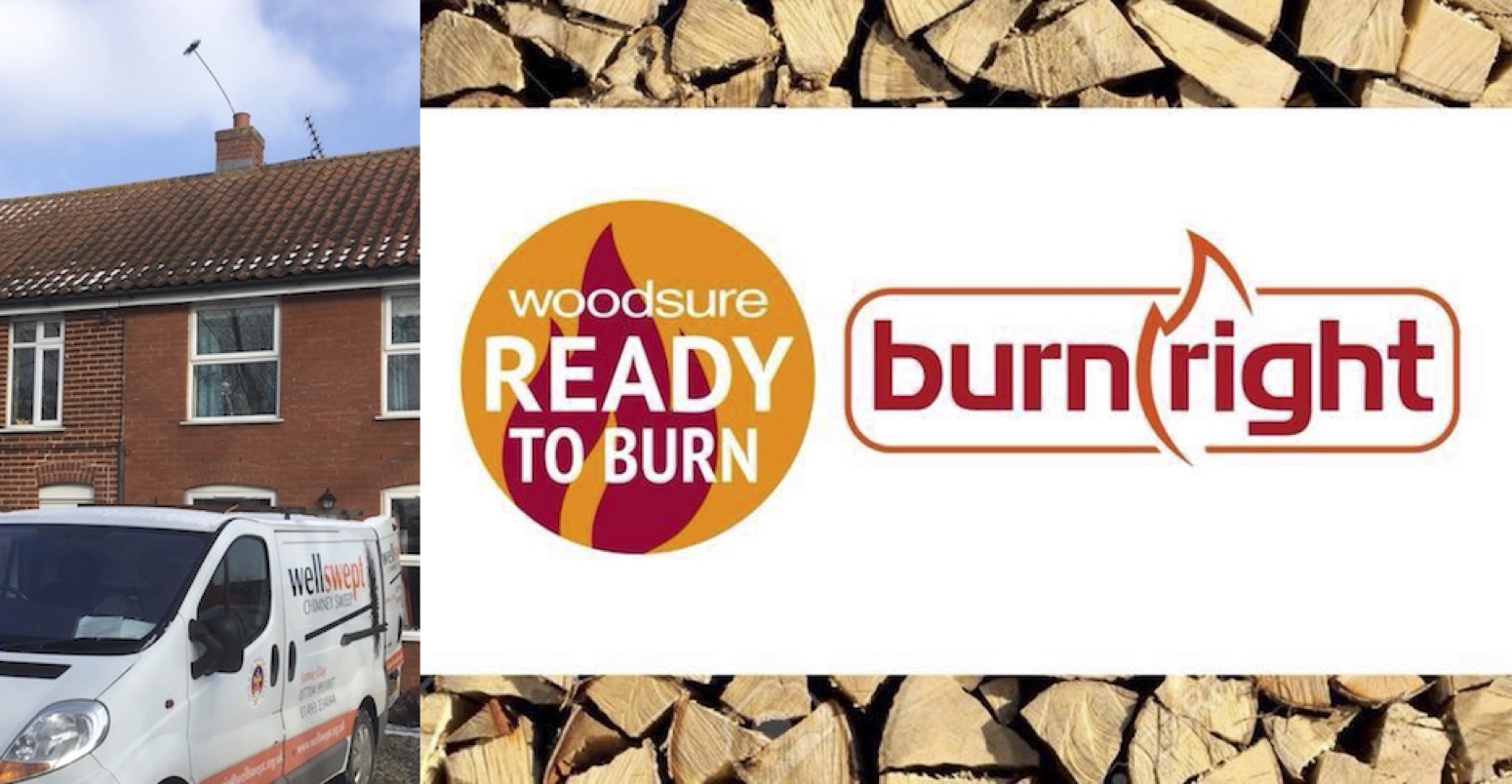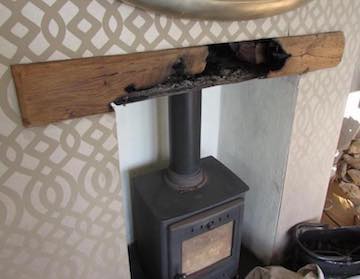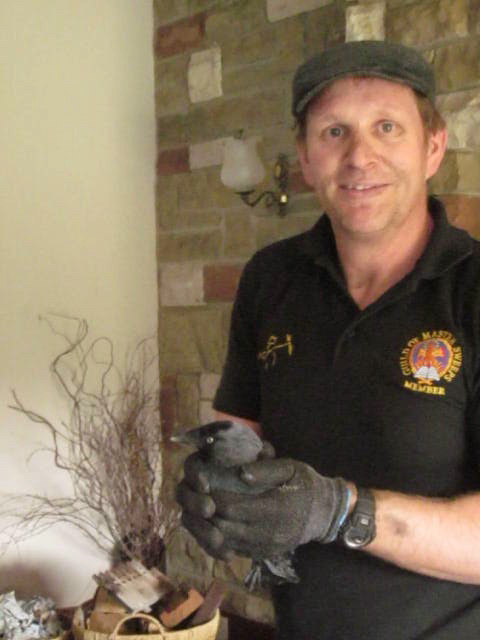When I have a moment and believe me they're a rarity, I'll be using this space to serve up littles bites of information, pictures, anecdotes, things borrowed etc that you hopefully will find relevant, informative and handy to know which should help you have safer, better fires.
April 18th 2024
I forgot to tell you…
I am, and have been, for a couple of years now, NVQ qualified ????
April 18th 2024
Hello!
I cannot believe it has been so many years since my last blog entry ???? I hope you’ve all been keeping well and no doubt I’ve visited some of you ???? On a positive note, I’ll take that to mean I’ve been busy cleaning chimneys!!
I’m currently laid up following knee surgery ???? but feeling positive and looking forward to being able to get back on the brushes, hoping latter part of May. In the meantime, I’ll look to give the website a spring clean!
Please don’t hesitate to get in touch as I’m still booking work for May onwards.
Jamie
April 7th 2019
Birds, nesting, nests...
Morning folks,
You've probably noticed increased bird activity, quite possibly centred around unused chimneys.
After a spate of recent calls, please be advised that all birds are protected under law (there are a few exceptions) and it's illegal to disturb a bird in the process of building a nest, or even worse, destroying a nest.
 February 4th 2019
February 4th 2019
A clean Chimney!
How often does your chimney need sweeping?
It's easy to forget that your chimney needs regular sweeping by a professional. After all, the inside of the chimney is hidden from sight and so the condition of the flue isn’t visible to the naked eye.
We're fantastic at keeping our houses clean but perhaps less so fastidious about our chimneys and appliances. Yet keeping the chimney clean is far more important for the several reasons that an unclean chimney puts your family at risk of carbon monoxide poisoning.
How many times per year should your chimney be swept by WELLSWEPT CHIMNEY SWEEP, Guild of Master Chimney Sweep and Hetas member?
The short answer is frequently when in use. It depends too on the type of fuel used and the chimney will definitely need sweeping regularly, no matter the fuel type. As a general guide, for smokeless fuel and gas, it should be once per year; for wood, quarterly when used and for bituminous coal, quarterly when used.
If you have a liner in your flue – it still needs sweeping. On more than a few occassions, customers have been advised that stainlees steel flue liners don't need sweeping. NONSENSE! Whenever a fuel is burnt, unburnt fuel in the form of soot/tar/creosote will be deposited in the flue. Regular sweeping will remove these deposits
Sascha Meding, vice chairman of the Guild of Master Chimney Sweeps, says:
”Regular servicing and sweeping of your chimney will ensure you get the best out of your fuel and appliance. Sweeping gets rid of soot and other residue, allowing dangerous gas to leave your home safely. WELLSWEPT CHIMNEY SWEEP will also give you best advice about the chimney’s condition and make sure everything is in order for you.
Remember... A clean flue is a Wellswept flue!
January 14th 2019
Clean Air Strategy 2019
So today the Government has released details of it Clean Air Strategy 2019 and this will have implications for users of Wood burning appliances, Multi-fuel appliances
and Open Fires.
You and me!
The aim of the strategy is to reduce pollution through use of more efficient appliances, cleaner fuels and servicing and maintenance of appliances and flues.
These are things that I always try to encourage.
Taken from the CAS 2019 document:
“The way in which we use our stoves can have
a big impact on air quality and how long the chimney and stove will last. A local professional sweep can help consumers get it right, ensuring that they get the most from their stoves and provide advice on optimum operation. This can help save money and avoid chimney fires. It is recommended that a chimney is swept twice a year.”
The full document is a fairly substantial read.
I have also included links to the Burnright campaign which is a fantastic resource and easy to digest:
https://burnright.co.uk/
and another easy to digest Guide to using Stoves and Open Fires:
https://uk-air.defra.gov.uk/…/1712041200_171010_open_fires_…
Please take the time to have a look at these documents and if you have any questions, please get in touch and I'll do my best to help you find the answers!
https://assets.publishing.service.gov.uk/…/…/uploads/attachm
ent_data/file/770715/clean-air-strategy-2019.pdf?fbclid=IwAR3gt9XWFo6_zHo_tVSR-NiZ4WnWxS1zCOO3-lMLjplryLlYhEv9lzN1blM
November 3rd '18
Combustibles...
Logs stacked beside or up against the stove. I see it on a weekly basis, and even if you’re not a chimney sweep, you've only to flick through the pages of a glossy ‘lifestyle’ magazine or look at a stove ad to see it. IT IS POTENTIALLY LETHAL.
I swept for a couple recently, who told me they'd had logs catch fire earlier this year after they had been stacked near their stove. They had been 'doing this for years'.
I appreciate some do it because it gives a nice, cottage feel. Others do it to ‘season’ their wood. Either way, it is a massively foolish thing to do, and is NEVER
acceptable for a number of reasons.
First and foremost, it is a fire hazard. Stoves get exceedingly hot and the heat transfers to its surroundings. If those surroundings are combustible, then they have the POTENTIAL to catch fire. Even if they don’t burst into flames, they can start to smoulder and that in itself is a CARBON MONOXIDE risk.
Also, stacking logs against your appliance means you runs a very high risk of damaging your stove. Freestanding appliances need a minimum amount of space for air to circulate around them. Not only is this necessary to allow the room to be heated, it also stops the appliance from becoming too hot. If that happens, then stoves can buckle and crack, meaning they can no longer be used.
The best way to stay safe but maintain that ‘rustic’ feel is to get a log basket it and keep it at an appropriate distance from the fireplace. And any ‘seasoning’ of wood should be done outside during a prolonged period of time.
Stacking logs against or around a fire is never safe – PLEASE don’t do it.
BE SAFE FOLKS - KEEP ALL COMBUSTIBLES CLEAR OF STOVE, THAT INCLUDES FURNITURE, CURTAINS ETC.
August 8th '18
Latest guidance from the FPA (Fire Protection Association for Thatched Buildings
If you live in a Thatched property and use a Wood burning or Multi-Fuel appliance, or even an open fire, this is a very important read for you.
Also attached are links to both the full report and the Guidance document.
https://www.thatchadvicecentre.co.uk/ar…/fpa-guidance-thatch
https://www.thatchadvicecentre.co.uk/…/…/08/FPA-Guidance.pdf
https://www.thatchadvicecentre.co.uk/…/FPA%20Report%20-%20F…
July 29th '18
Multi-Fuel Appliances. Choosing the right fuel, mixing of fuels and slumbering....
If there was one term I would ban in the world of stoves and fireplaces, it would be ‘multi-fuel’. The term implies that an appliance can take multiple fuels at the same time. And while strictly speaking it can, it’s actually not such a great idea.
Firstly, coal (both smokeless and ordinary household coal) have very different properties, so the way they burn is different. Wood requires air from above the fuel to combust, whereas coals need air from below. That’s why ‘multi fuel’ stoves have grates (which allows the ash to fall down into a pan) and woodburners just have a solid base.
Putting the two together on a grate means that there are two sets of fuels competing for the same amount of air.
More importantly though is the very real problem of sulphurs from the coals mixing with the moisture from the wood to create a highly acidic deposit which can and does corrode stainless steel liners.
It’s worth bearing in mind that even well seasoned wood gives off some moisture (about 20% of its mass) and that, when mixed with the sulphurs from coal, can create the liner-eating deposit.
The issue is made worse from ‘slumbering’ – turning the air controls right down on your appliance in order to prolong the burn. This causes both fuels to burn at too low a temperature (remember – the greater the air supply, the greater the heat) and that produces excess moisture to be given off. This is the case even if you just burn one fuel, as it can cause tars and creosotes in your flue which in turn can provoke a chimney fire.
My advice is that, if you have a ‘multi fuel’ stove attached to a stainless steel liner, then just stick to one fuel. If you are in in a smokeless area, with a non-DEFRA exempt stove, then by law you should only burn smokeless fuel. If you are not in a smokeless area or have a DEFRA-exempt stove, you have the choice of either.
Whichever you choose, burn them hot (investing in a stove thermometer can help) and don’t forget to get your flue swept regularly as this will help prolong the life for your liner.
July '18
Hetas Approved Sweep...

Hi folks,
I'm very pleased to announce I'm now a Hetas Approved Chimney Sweep.
I'm also looking to become a Hetas Approved Installer soon, too :-)
https://www.hetas.co.uk/business/?chimney-sweep=filter&postcode=NR29+4QT
May 2nd '18
Charred Timber....
Hi folks,
Whenever I sweep an appliance be it an open fire or a wood-burning / mutli-fuel stove, I am always very aware of any potential danger with regards to distances to combustibles. If I feel something is dangerous I will make the customer aware and explain why. It will also be noted on the sweep certificate and, in extreme cases, I will 'red card' the appliance and advise customer not to use due to it being dangerous.
The pic below illustrates what can happen when a combustible material, on this occasion it's the timber beam. is too close (less than 3 x stove pipe diameter) to the single-skin metal connection pipe coming off the top of the stove. If the beam had been shielded then this might have been avoidable as the distance of the combustible material to the stove requirement would have been reduced.
I always try to get across the point that it is often that an item has the potential to combust and just because "it's been like that for years" doesn't not mean it
won't happen and is sometimes just a question of if, not when!
Be safe and if in doubt, please call me!

March 24th '18
Bird Nests... Agh
Morning folks,
Well Spring seems finally to have arrived :-)
This last week has mainly been about removing bird nests and fitting Bird Guards.
It always amazes me when I'm called out to investigate why an open fire/appliance that appears to have been working ok through the burning season suddenly stops drawing or smoking back into the room, only to find that the flue is blocked with nest material from either the previous summer or intermittant/infrequent use allowing nest building to take place.
Please remember that you should act immediately if you see twigs etc laying in fire opening.

March 10th '18
Bird Nesting season
Morning folks, as Spring is just around the corner, so is bird-nesting season.
Hers's a link to a blog written by a GOMCS Master Sweep, Danny Hodgson and is a great insight into the problems and dangers of wildlife nesting in chimneys, especially live chimneys!
http://www.hodgsonchimneysweep.co.uk/critters-and-birds-in-chimneys-why-evict-them/
March 11th '18
Stoves and open fires are becoming increasingly popular again in the UK.
A few generations ago, almost every home had a ‘real’ fire, so people grew up knowing how to get the best out of them. With the advent of gas, that ‘link’ with the past was broken, and there are now people in their 40s and under who have never had one in their home.
Consequently, most people who have a solid fuel appliance installed are left to their own devices. Some can carry on quite happily for years, until they realise their is a problem. More often not, the issue relates to what they are burning or how they are burning it.
Enter Burn Right, set up by industry professionals to give you, the consumer, up-to-date advice at your fingertips.
Lorem ipsum dolor sit amet, consectetur adipiscing elit. Nullam porttitor augue a turpis porttitor maximus. Nulla luctus elementum felis, sit amet condimentum lectus rutrum eget.